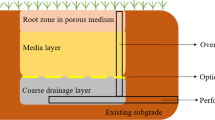Summary
The construction of overhead lines, their maintenance, refurbishment and renewal are nowadays seen in a different light than before. Today environmental aspects are among the most challenging aspects of high concern – in every part of life. The society's point of view has changed during the last 20 years – nature and environment are now of mayor interest. In addition to techniques and science, the perception of landscape, fauna and flora is taken into consideration during the planning process of an OHL. We call this "Extended Ecology". The project presented here for the replacement of a 220 kV overhead line which will run along an existing OHL corridor through a floodplain woodland in a nature protective zone is a good example for the new approach. To create harmony between ecology and economy is a precondition of the project. The responsible and careful treatment of the existing OHL corridor during the last few years has resulted in an improvement of conditions. In only a few years the number of endangered species living in these areas and listed on the "Red Data Lists" has increased from 23 to 40. The city of Linz is the capital of the Region "Upper Austria" and is Austria's centre for heavy metal industry with European dimensions (e.g.VOEST Alpine). The city is also well-known for advanced technologies and recently for modern arts (ars electronica, Klangwolke, European Cultural Capital 2009). The expansion of the industry and of dwelling areas reduced and endangered the natural environment; therefore – and as a logical compromise – several areas were nominated as natural protective zones. Existing overhead lines run through some of these, and some of them need to be uprated. Two parallel 110 kV OHL run through the protected floodplain woodland of "Donau-Traun-Auen". One of them was built in the 1940ies and needs to be rebuilt as a 220 kV line. Since 2006 ecological treatment techniques have been in practice in these corridors. This area originally showed a pattern of degraded nutrient-poor alluvial meadows, rich in invasive neophytes, fragments of semi-dry calcareous-grassland, tiny large sedge or reed beds in moist depressions and large short rotation coppice woodland. During the last years additional ecological compensation measures have been implemented: ponds have been created and open gravel areas generated by construction measures have been re-vegetated taking into account the soil seed bank and using proved techniques of nature conservation. Significant success can be reported after only a few years of subtle treatment techniques aimed at optimal development of target vegetation. The typical composition of plant species could be restored in core areas of nutrient-poor alluvial meadows. The number of species enumerated in "Red Data Lists" has increased from 23 to 40, including highly endangered plants demanding moderate disturbance regimes. If ecological treatment is continued, further increase of environmental conservation value in the corridor can be expected.
Similar content being viewed by others
References
Cigre Publication 147, WG 22.14 (1999): High voltage overhead lines, environmental concerns, procedures, impacts and mitigations
Ernst, A., Gros, T., Lugschitz, H. (2004): Corrosion protection of steel towers and camouflage of lines using the Duplex-system. Cigre Session 2004, Paper B2-313
Gehmacher, E., Hagen, A. (1998): Integration von Freileitungen in die Natur – NANU (Integration of overhead lines into the environment). Wien: BOAS
Holzer, V. (2009): Roseldorf – interdisziplinäre Forschungen zur größten keltischen Zentralsiedlung Österreichs ( = Forschung im Verbund. Bd 102). Wien. http://www.keltenforschung-roseldorf.at/sandberg.htm/
Lenglachner, F., Schanda, F. (1990): Biotopkartierung Traun-Donau-Auen Linz 1987. In: Naturkundliches Jahrbuch der Stadt Linz, 34/35: 9–188. http://www.linz.at/presse/2005/200509_9937.asp/
Author information
Authors and Affiliations
Rights and permissions
About this article
Cite this article
Hagen, A., Lenglachner, F., Aberle, S. et al. Overhead line in a protected floodplain woodland – "Extended Ecology" as basis for OHL planning and maintenance. Elektrotech. Inftech. 127, 354–357 (2010). https://doi.org/10.1007/s00502-010-0791-5
Published:
Issue Date:
DOI: https://doi.org/10.1007/s00502-010-0791-5




